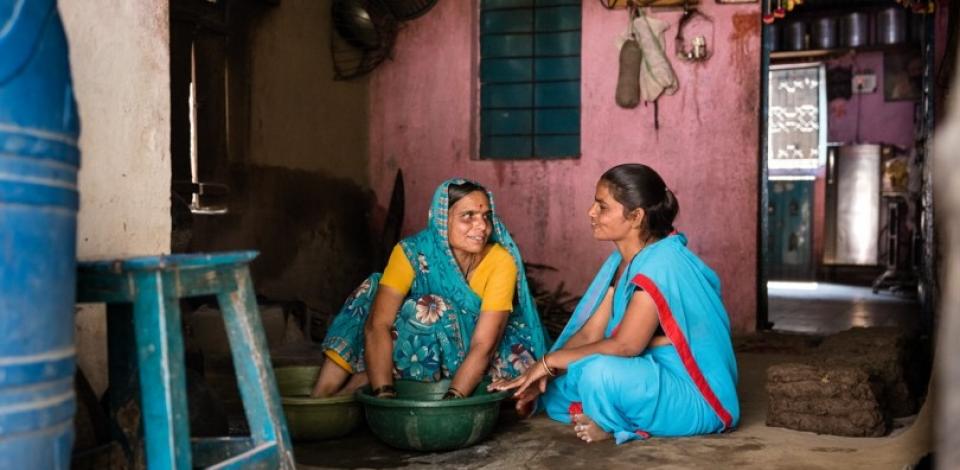When considering the approach of your assessment, you should take the following two questions into account:
-
What method would best fit your purpose? The next three chapters in this Guide describe qualitative, quantitative and mixed methods of assessment. There are many different methods for assessing stigma and mental wellbeing (see Guide 4 Annex 2: Assessing stigma in the field).
-
What is important when you assess stigma or mental wellbeing in your specific setting? Consider what might be specific to your situation or population – for instance, whether the words ‘stigma’ and ‘mental wellbeing’ are used and how they are understood, the level of education and available time of the target population, language barriers, the appropriateness of measuring in the target population, the sensitivity of the topic and the potential for distress among respondents, people feeling they should say a certain thing to please the researcher (social desirability), the availability of questionnaires or other equipment (for example pen, paper, a voice recorder and tools for data analysis).

What method would best fit your purpose?
To assess the nature, extent or severity of stigma, or the type and severity of mental health problems, you can use qualitative or quantitative methods – or, preferably, a combination of both.
-
Quantitative methods give you information on what type of stigma or mental health problem exists, how widespread it is and how severe it is. This information is collected in a structured way to enable comparison between groups of people, points in time or different settings. Often questionnaires are designed to generate a score to make comparison easier. See chapter 3, ‘Quantitative assessment methods’, for further details.
-
Qualitative approaches give you in-depth information, help you understand the perspective of the respondent and provide the necessary context. This information is often collected using open or semi-structured interviews, focus group discussion sessions and other methods. Often the number of respondents is smaller than when using quantitative methods, because qualitative methods are more time consuming. See chapter 4, ‘Qualitative assessment methods’, for further details.
-
It is best to combine both approaches. This will give you the most in-depth and accurate picture. The results can complement each other, but can also be used to validate each other. See chapter 5, ‘Assessments using mixed methods’, for further details.

What is important when you assess stigma or mental wellbeing?
The reasons for stigmatisation can be different for each affected person or community, due to local culture, norms, beliefs and values, government policies, stakeholders etc. Similarly, mental wellbeing or problems such as depression may be expressed in different ways. Therefore, the methods you select and the way you decide to administer them may need to be adapted to your specific setting taking these factors into account. A few should be considered in every context.
-
When we try to understand or assess a certain experience or phenomenon, it is important that we are talking about the same concept. So, before choosing a method, it is important to know whether the terms ‘stigma’ and ‘mental wellbeing’ are used in the local setting and what they mean to people in this setting. If these words are not used, find another word or words that together describe the concepts we try to understand or measure.
-
When choosing a method, it is important to consider the education level and culture of the respondents. We should ensure that the language we use, the questions we ask and the level of difficulty of the questions are suitable for our respondents. We can help make sure of that by piloting a method with a few persons before using it with a larger number of people (see Guide 4 Annex 2: Assessing stigma in the field).
-
When choosing a method, it is also important to consider the burden on the respondents. How much time is the instrument (e.g., questionnaire, interview) likely to take? Questionnaires should always be accurately translated into the local language so that the interviewer does not have to translate the questions during the interview (see Guide 4 Annex 2: Assessing stigma in the field).
-
It is essential to train interviewers so they can get good quality information. Interviewers should have the necessary knowledge about stigma and mental wellbeing and the importance of assessing it, and the right attitude (e.g. non-judgemental) and skills to administer the questionnaire or interview (see Guide 4 Annex 2: Assessing stigma in the field for elaboration on these points).
-
Before the interview, explain the purpose of the research and how it will be done to each interviewee in a language and form that is understandable to the person concerned. People should be able to give informed consent prior to participating in research.
-
Ensure adequate privacy for the assessment interview. The respondent should feel comfortable to give honest feedback. Try to make sure that a quiet and private place is available to conduct the interview.
-
Certain questions may have a big emotional impact on the respondents. Sometimes a respondent is found to have severe mental distress, depression or anxiety. Make adequate provision for referral to professional help in advance so that the interviewer knows what to do if such a situation arises.
-
Respondents might have questions at the end of the interview, for example about the cause or prognosis of their condition. The interviewer needs to have the knowledge and time to answer and address these concerns.
